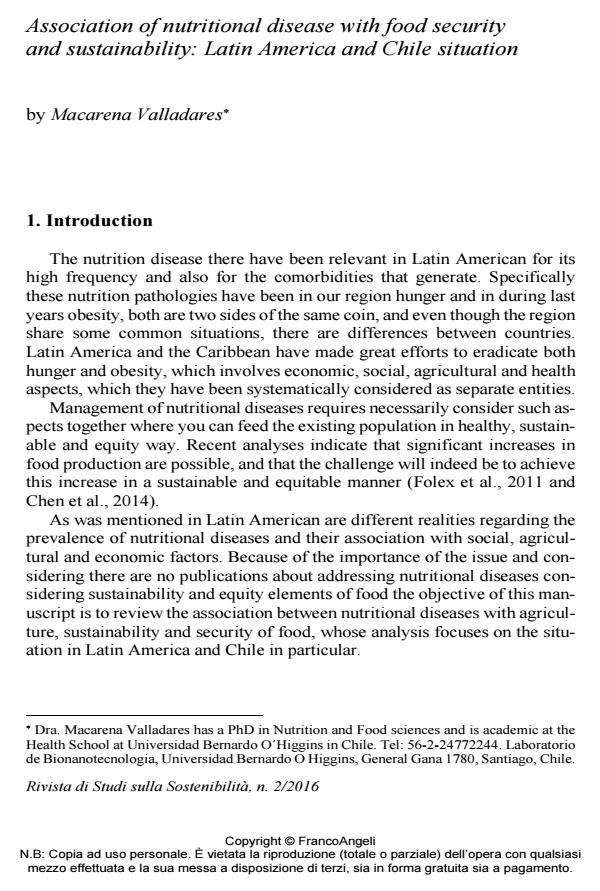Association of nutritional disease with food security and sustainability: Latin America and Chile situation
Titolo Rivista RIVISTA DI STUDI SULLA SOSTENIBILITA'
Autori/Curatori Macarena Valladare
Anno di pubblicazione 2017 Fascicolo 2016/2
Lingua Inglese Numero pagine 11 P. 215-225 Dimensione file 150 KB
DOI 10.3280/RISS2016-002019
Il DOI è il codice a barre della proprietà intellettuale: per saperne di più
clicca qui
Qui sotto puoi vedere in anteprima la prima pagina di questo articolo.
Se questo articolo ti interessa, lo puoi acquistare (e scaricare in formato pdf) seguendo le facili indicazioni per acquistare il download credit. Acquista Download Credits per scaricare questo Articolo in formato PDF

FrancoAngeli è membro della Publishers International Linking Association, Inc (PILA)associazione indipendente e non profit per facilitare (attraverso i servizi tecnologici implementati da CrossRef.org) l’accesso degli studiosi ai contenuti digitali nelle pubblicazioni professionali e scientifiche
Introduction: In America Latina and Caribbean exist high levels of so called nutritional diseases such as hunger and obesity. The objective is to review the antecedents between nutritional diseases with elements outside the scope of health associated with crop production. Methods: The search focused in nutrition, crop production, food security and sustainability, in Latin America and Chile. Results: A pathway for the management of nutritional diseases it is to consider aspects that influence food all as a whole. Particularly Chile present high obesity levels and are some initiatives for management from the perspective of agriculture and food security. Must be considered economic, social, political, health and sustainability aspects on crops, hunger and obesity should consider the same determinants. Conclusions: Latin America and Chile should develop crops that allow the management of nutritional diseases, generating enough food and care for the environment.
Introduzione: In America Latina e Caraibi esistono alti livelli di malattie cosiddette nutrizionali, come la fame e l’obesità. L’obiettivo è quello di rivedere i precedenti tra le malattie nutrizionali con gli elementi al di fuori del perimetro di salute associati con la produzione vegetale. Metodi: La ricerca focalizzata in nutrizione, la produzione agricola, la sicurezza alimentare e la sostenibilità, in America Latina e in Cile. Risultati: Un percorso per la gestione delle malattie nutrizionali è da considerare aspetti che influenzano cibo tutto nel suo complesso. Particolarmente Cile presenti alti livelli di obesità e sono alcune iniziative per la gestione dal punto di vista di agricoltura e sicurezza alimentare. Devono essere considerati aspetti economici, sociali, politici, di salute e di sostenibilità su colture, la fame e l’obesità dovrebbero prendere in considerazione gli stessi importanti. Conclusioni: l’America Latina e il Cile dovrebbero sviluppare colture che permettono la gestione delle malattie nutrizionali, generando abbastanza cibo e la cura per l’ambiente.
Parole chiave:Nutrizione, sostenibilità alimentare.
Macarena Valladare, Association of nutritional disease with food security and sustainability: Latin America and Chile situation in "RIVISTA DI STUDI SULLA SOSTENIBILITA'" 2/2016, pp 215-225, DOI: 10.3280/RISS2016-002019